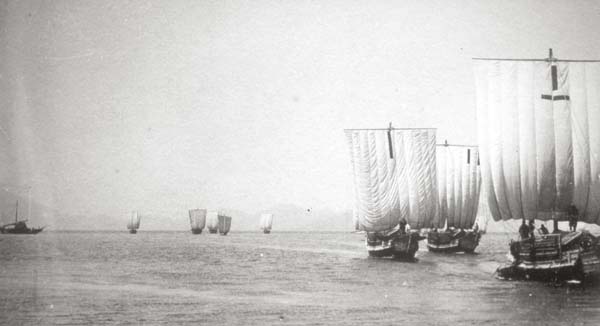Introduction to Kitamaebune

Kitamaebune of Obama(小浜) port
(c)IDA Haruhiko ca. Meiji medium-term
Kitamaebune(北前船, literally "northern-bound ships") is a generic term used to refer to Japanese commercial ships from the Edo to the Meiji periods, which sailed connecting Osaka and Ezo (now Hokkaidō and the south Kurile islands) via various ports in the Inland Sea and the Sea of Japan coast.
Kitamaebune's owner dealt in all sorts of goods, but he mainly exported goods such as cotton, clothing, sake, salt, tobacco, medicine and other staples from Osaka to Ezo and imported goods such as herring, salmon, sea cabbages (kelp) to Honshū. Dry herring were in huge demand as fertilizer for commercial crop like cottons, but not edible.
In the feudal system with samurais at the top, the Kitamae-bune was a "dream ship" that could make ordinary people rich with their talent and hard work. It is said that the sailor has only an inch of plank between him and death.Despite numerous shipwreck records,It seems that there was no shortage of people who challenged the Kitamae-bune dream.
A curious anecdote has been handed down about how Takataya Kachi started his Kitamae-bune business.
On New Year's Day in 1797, his six brothers gathered in Hyogo (now Kobe) for a New Year's Day meal. At the table, Kachi looked around at everyone and said, "Before dawn today, I had my first dream in which the sun rose over the northern sea. The sun is supposed to rise from the eastern sea. It is strange that it was from the northern sea." Before Kachi could finish, his younger brothers, Kazo and Kinbei, said that they also had the same dream. Everyone was astonished at this strange occurrence, and they thought it might be a good omen. They decided to extend their voyage to the North Sea, or Ezo, this year.
